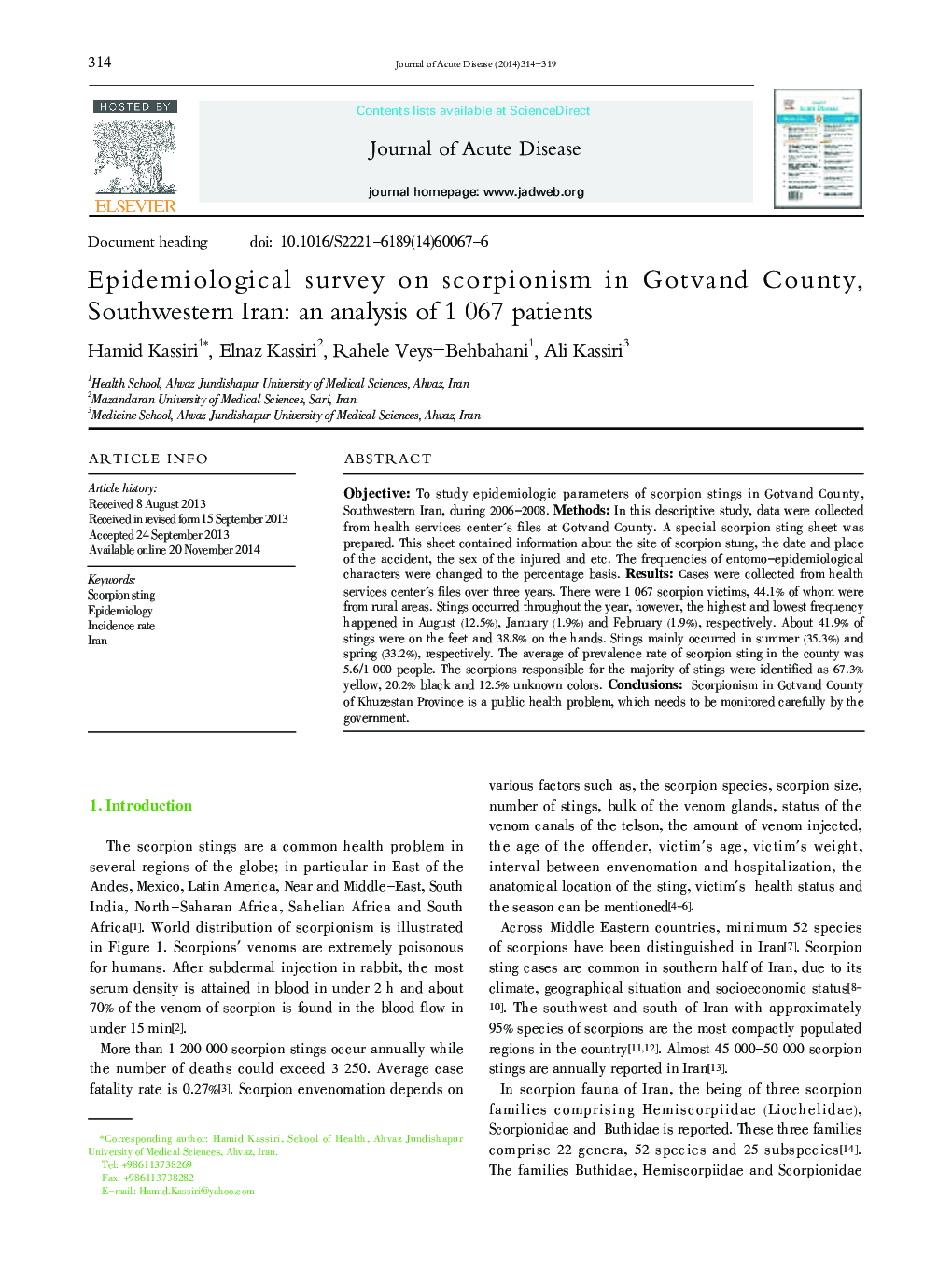| Article ID | Journal | Published Year | Pages | File Type |
|---|---|---|---|---|
| 3475297 | Journal of Acute Disease | 2014 | 6 Pages |
ObjectiveTo study epidemiologic parameters of scorpion stings in Gotvand County, Southwestern Iran, during 2006–2008.MethodsIn this descriptive study, data were collected from health services center's files at Gotvand County. A special scorpion sting sheet was prepared. This sheet contained information about the site of scorpion stung, the date and place of the accident, the sex of the injured and etc. The frequencies of entomo-epidemiological characters were changed to the percentage basis.ResultsCases were collected from health services center's files over three years. There were 1 067 scorpion victims, 44.1% of whom were from rural areas. Stings occurred throughout the year, however, the highest and lowest frequency happened in August (12.5%), January (1.9%) and February (1.9%), respectively. About 41.9% of stings were on the feet and 38.8% on the hands. Stings mainly occurred in summer (35.3%) and spring (33.2%), respectively. The average of prevalence rate of scorpion sting in the county was 5.6/1 000 people. The scorpions responsible for the majority of stings were identified as 67.3% yellow, 20.2% black and 12.5% unknown colors.ConclusionsScorpionism in Gotvand County of Khuzestan Province is a public health problem, which needs to be monitored carefully by the government.
